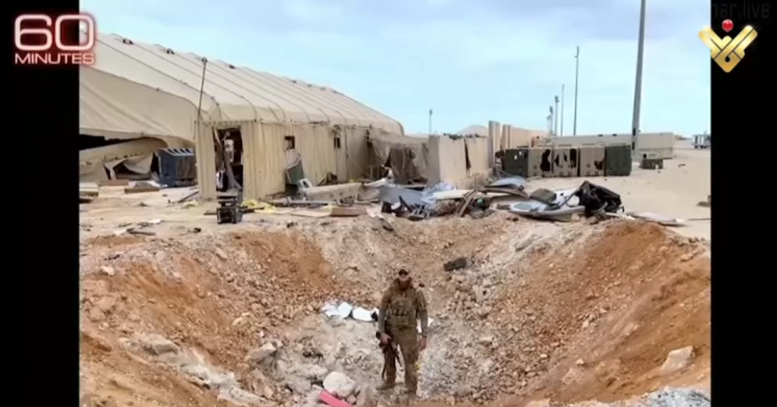American media reports continued highlighting the Iranian missile attack which targeted the US airbase of Ain Al-Asad in Iraq on January 8, 2020, in response to the US drone strike which claimed the soul of the former Chief of IRGC Quds Force, General Qassem Suleimani.
CBS news website posted a report in which it focused on the effects the Iranian strike left on the nearly 2,000 American soldiers stationed at the base. .
“11 theatre ballistic missiles with warheads weighing more than 1,000 pounds each began raining down on the U.S. base and the surrounding area. It was the largest ballistic missile attack against Americans in history.”
“Words can’t even describe the amount of energy that is released by these missiles,” US Army Major Alan Johnson told 60 Minutes. “[It] knocked the wind out of me, [I] immediately lost all my hearing, [I] felt like I was underwater…followed by the most putrid tasting ammonia…dust that swept through the bunker [and] coated your teeth.”
Maj. Johnson told 60 Minutes contributor and CBS News national security correspondent David Martin that he survived the bombing in a bunker that was originally constructed to withstand 60-pound munitions.
Army Major Robert Hales, the highest-ranking medical doctor on the base, told 60 Minutes the attack was “sci-fi movie-like.” During the bombing, he was in an armored vehicle a safe distance outside the base and feared he would return to find hundreds of his fellow troops dead.
“I honestly thought that I was going to come back, once the attack was over, and see just mass casualties across the base,” Hales told Martin.
No U.S. troops were killed during the attack, but within days it became clear that it was a mass casualty event. More than 100 service men and women were diagnosed with traumatic brain injuries caused by concussions sustained during the bombing.
Maj. Hales told 60 Minutes there is not a lot known about brain trauma caused by a ballistic missile attack of this magnitude, in part due to its unprecedented nature.
Source: Websites




